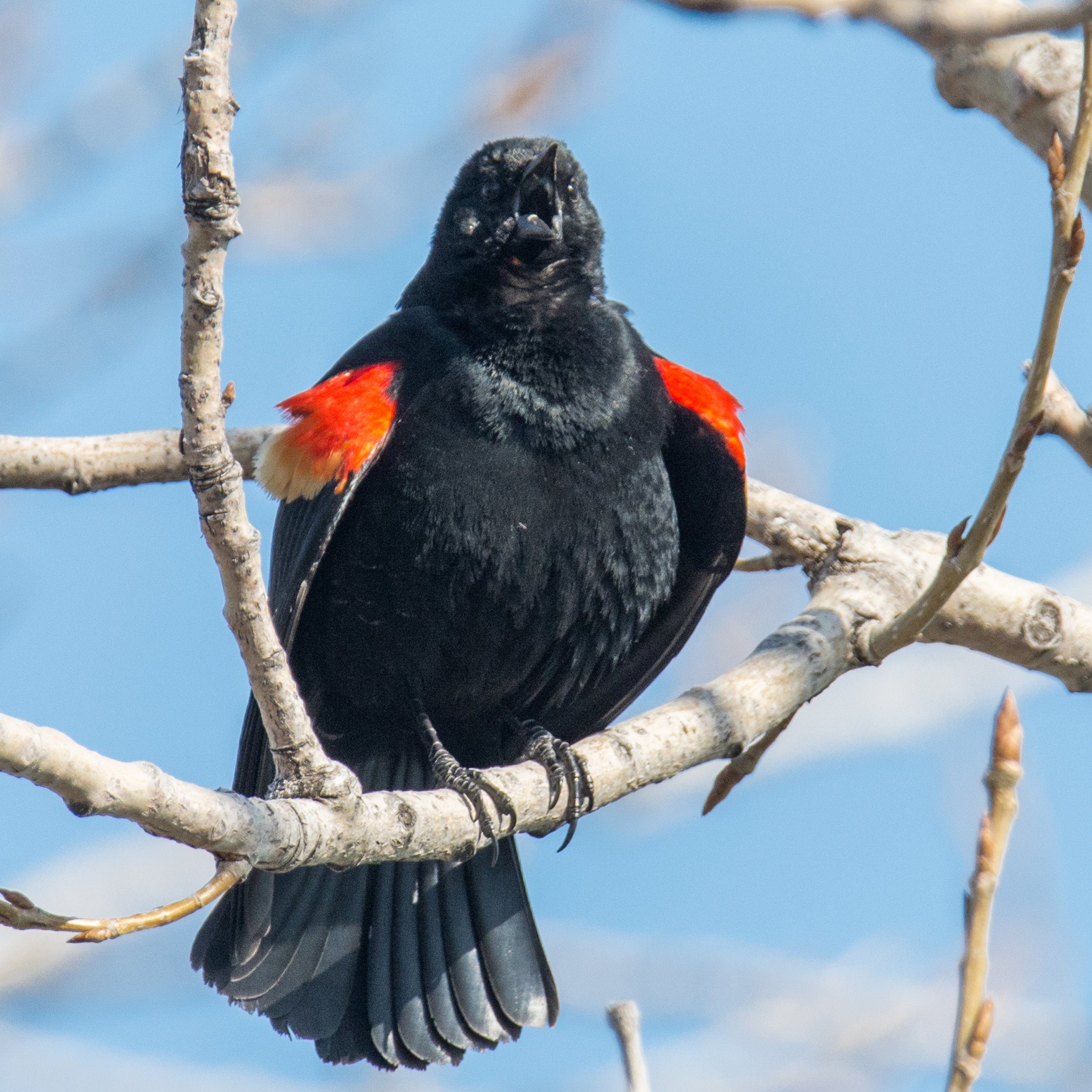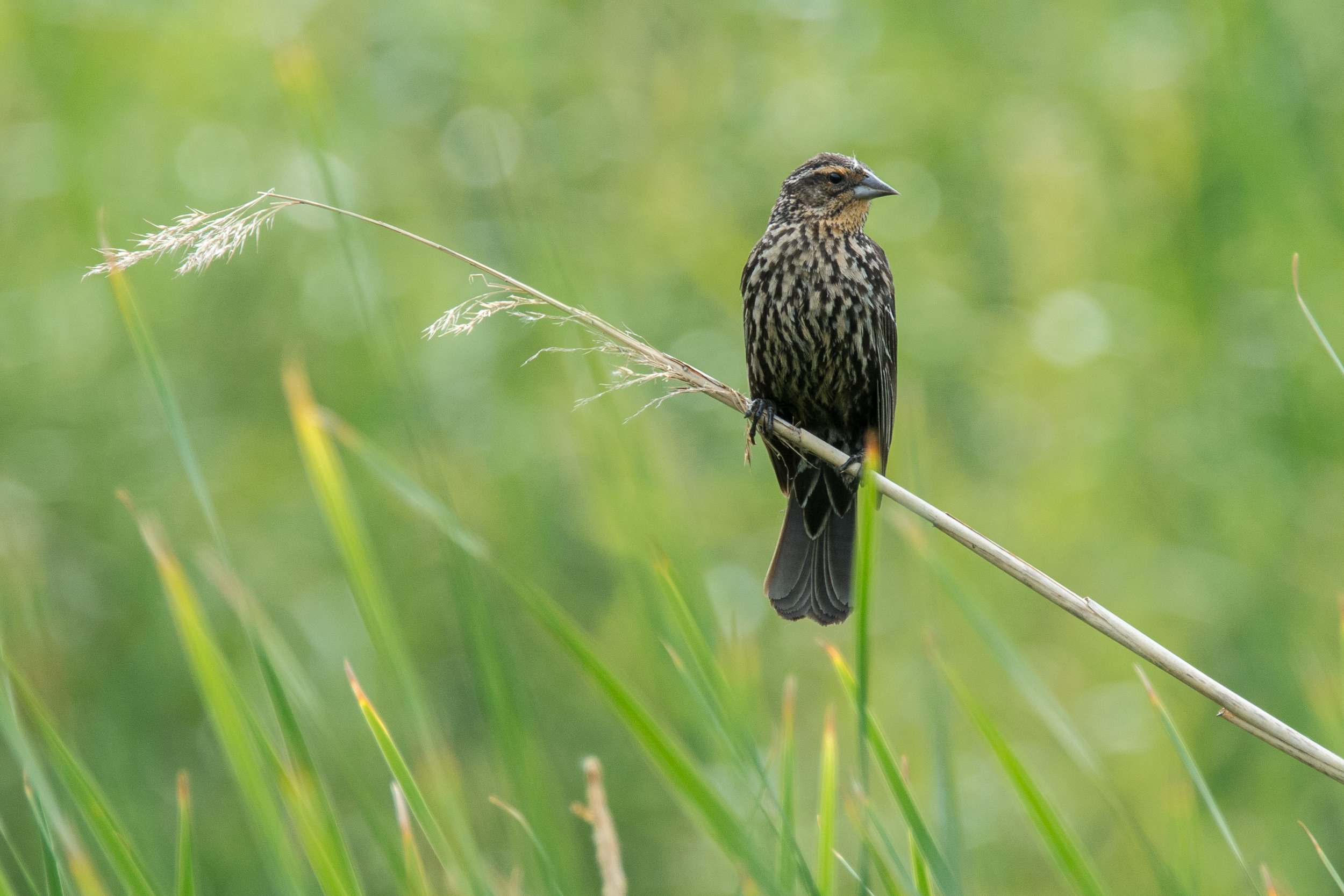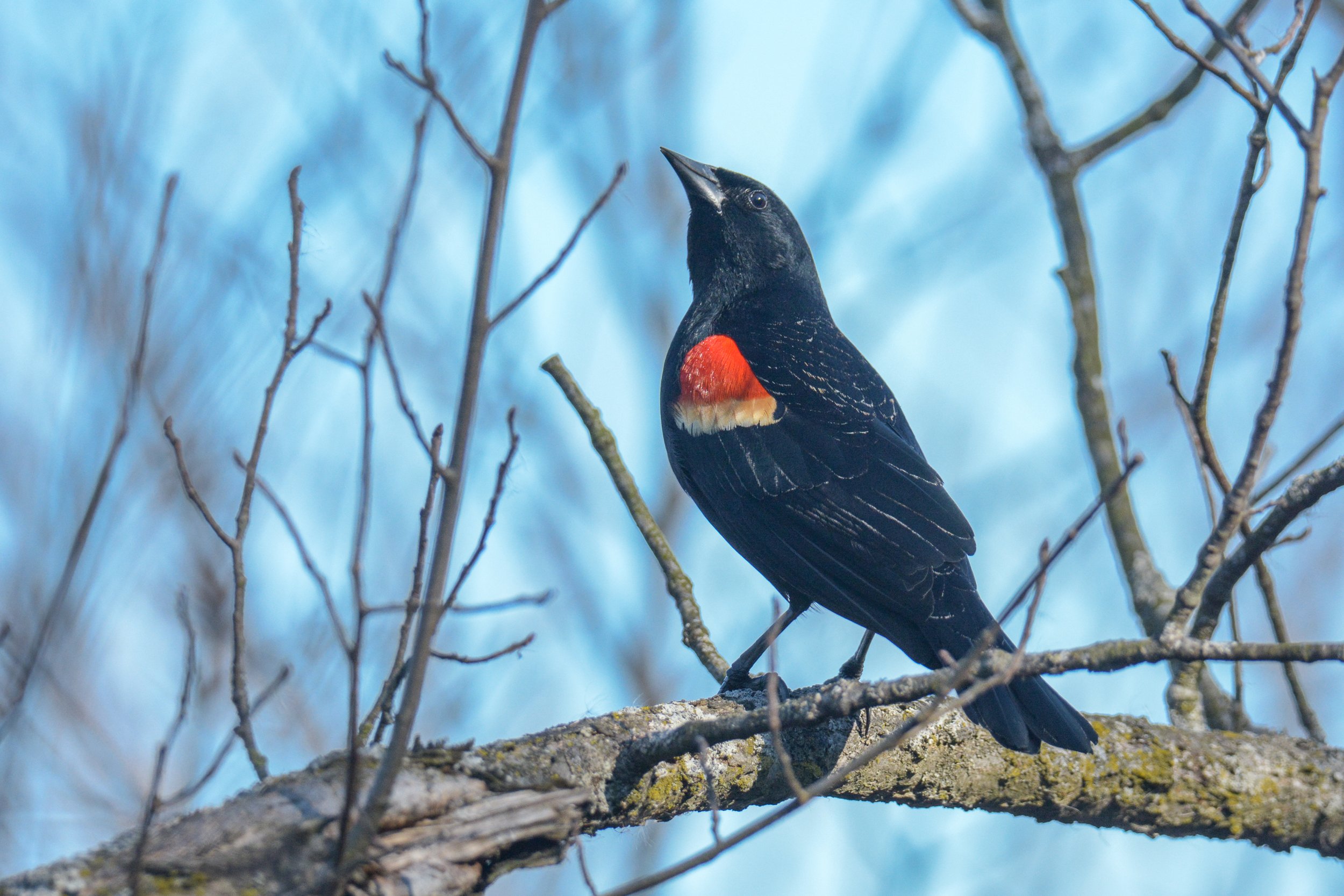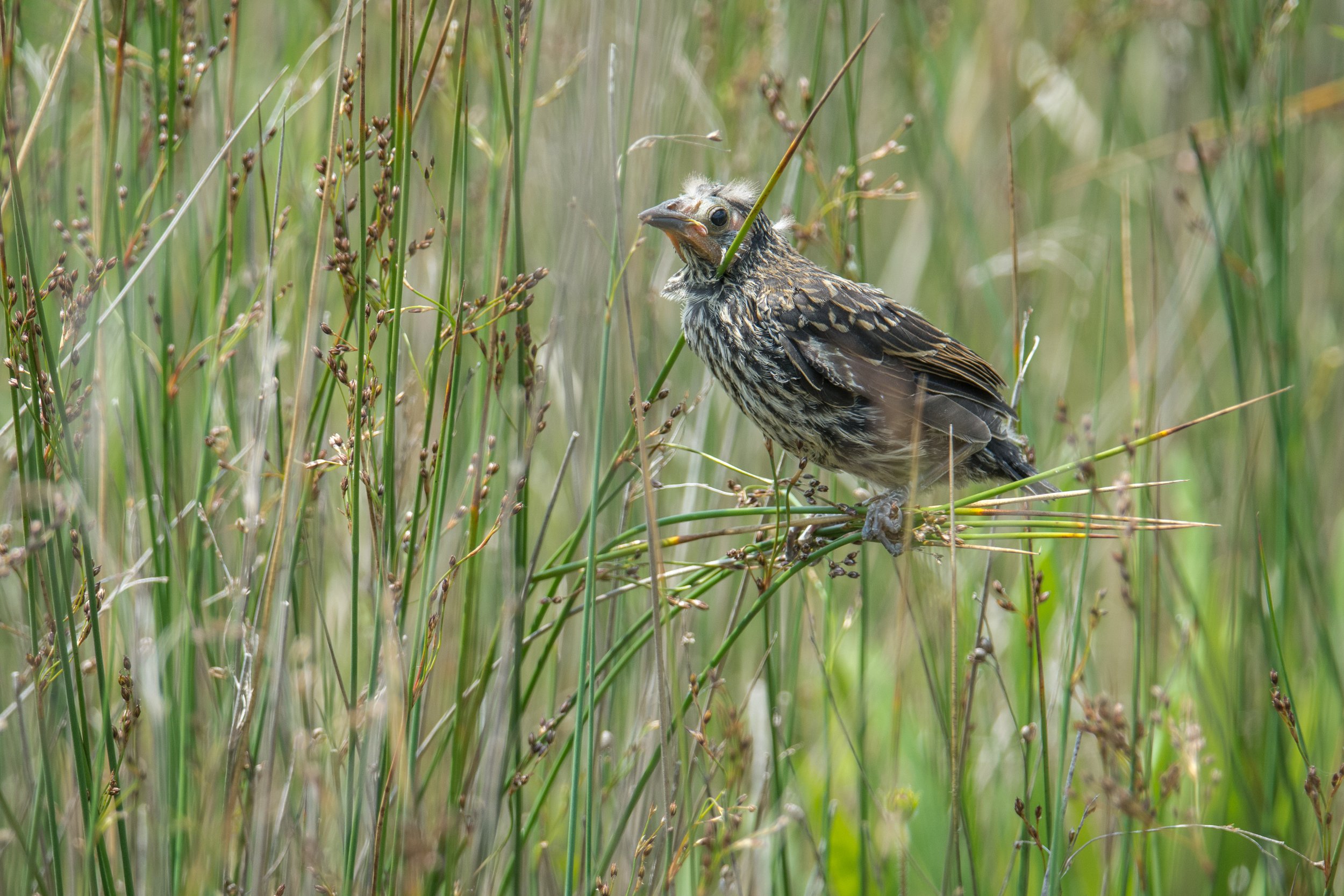Dan's Feathursday Feature: Red-winged Blackbird
The Red-winged Blackbird makes me feel legendary, at least for fleeting moments.
Whenever I approach a cattail marsh or a forest-fringed wetland in spring, I am met with fanfare fit for a Roman general celebrating his latest triumph. I picture myself on gilded chariot pulled by four white horses, my bodyguard holding over my head a laurel wreath. Around me, the fawning throng raises its morning cacophony of chatter and song—Marsh Wren, Song Sparrow, Sora, Tree Swallow. I smile benevolently as I pass, jotting their names in my notebook for posterity. As I move through the crowd, from the tops of the bending cattails a coterie of Red-winged Blackbirds sound their herald trumpets: Da da-da DAA! Da da-da DAA! I just eat it up.
If only they would stop there.
Legend has it that even as a triumphant Roman general celebrated his moment of glory, reveling in the blare of trumpets and the screaming throng, his servant would stand at his side, whispering in his ear, lest the glory go to his head: Respice post te. Hominem te memento. In every marsh there is always at least one Red-winged Blackbird that has read up on its Roman history, and knows Latin. It rises from its perch and circles me screeching: “Watch your back. Remember that you are but human.”
Heady with the spoils of a good birding outing, I ignore the advice and saunter on. Suddenly something slaps me hard on the back of my head. I pivot in time to see a flutter of black wings, with a red and yellow patch flashing brightly.
My regal stature takes flight in the flash of those red-black wings. I flinch, I cower—actions unbecoming of a proud general. I glance over at the bird that had warned me of doom. It glares back, as if to say “Hey buddy, this is our territory. Bow that head, if you know what’s good for you.”
This time I heed the advice, because the attacking bird has circled around for a second pass, swooping to scratch at the top of my head with its claws. It continues to harass me until I cross some invisible line of demarcation and enter what is apparently neutral territory.
This drama plays out every time I visit a marsh or other area where Red-winged Blackbirds hold court. Each time, the Red-winged Blackbird plays all three roles: sycophant, seer, assailant. Each time, I am raised up and brought low. I take some comfort in knowing that as the object of the Red-winged Blackbird’s ire I am in good company. Many other would-be Caesars are humbled by this two-ounce tyrant. Great Blue Heron, Red-tailed Hawk, raccoon, coyote—all are, like me, many times larger than the Red-winged Blackbird. But if they stray into a male Red-winged Blackbird’s territory, they are screamed at and dive-bombed until they beat a humiliating retreat. I have no doubt that the Red-winged Blackbird would attack a hippopotamus if one wandered into his marsh.
The male Red-winged Blackbird that knocked me off my high horse that morning in spring had arrived at this marsh some time in early March, after wintering in Louisiana or some other southern state. He endured the scarce food supply and the late Chicago snowstorms to stake out his territory in anticipation of the later-arriving females. Brandishing his bright red and yellow shoulder patches and puffing himself up menacingly, he fought off all other males who vied for a stake in his plot.
When the females arrive in late March, they find the marsh dissected by the stronger males into spheres of influence—like non-intersecting circles on a Venn diagram. Each female chooses a male and his territory and begins to build her nest in the crotch of a cattail stalk, weaving strips of willow bark or cattail reeds or twine that blew into the marsh from the adjacent landfill.
Red-winged Blackbirds are not monogamous. When migration winds down, and every breeding female has settled on a place to raise her brood, almost every landowning male has at least two females with nests in his territory. In fact, some males may host as many as fifteen females—the better to assure the passing of their genes to the next generation.
Or so it seems. Don’t forget that for every territory-defending male there are probably half a dozen others who were cut out of the territorial pie when it was divvied up. Equally intent on passing on their genes, they are not about to let arbitrary boundaries stand in the way. Researchers have learned that in any male’s territory, roughly 25-50% of the females’ eggs are fertilized by males other than the reigning regent.
Maybe the best way to think about this interesting arrangement is that the dominant male is not a bully defending his harem, but rather the big kid on the block who is overseeing a sort of Pax Romana in his territory. His histrionics drive away potential predators and serve to create a space within which the females—and their courters—can raise their young in relative safety.
And there are no hard feelings, because at their core Red-winged Blackbirds are most comfortable when they are in flocks. Even in the heart of the breeding season, when tension between males is high, they gather in groups to feed—in neutral areas where no single male holds sway. At such times, the males hide their flashy red shoulder patches to avoid creating confrontations, and the dominant males mingle shoulder-to-shoulder with the same males they would attack if encountered in their own territory.
Back to my walk in the marsh. Judging from the loud whistles and flashy show of force by one Red-winged Blackbird circling just a yard above my head, I’ve apparently wandered into the territory of yet another male and his fiefdom. Humbled once again, I realize that he’s just doing his job, so I swallow my pride, and duck and weave as I back away to avoid confrontation.
And I put on a hat. Praemonitus, praemunitus.
Dan's Feathursday Feature is a regular contribution to the COS blog featuring the thoughts, insights and photography of Chicago birder, Dan Lory on birds of the Chicago region.










